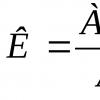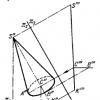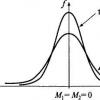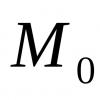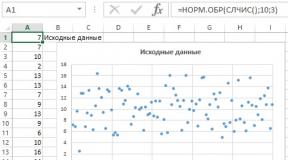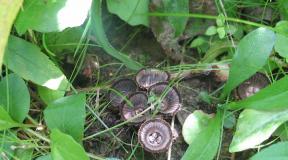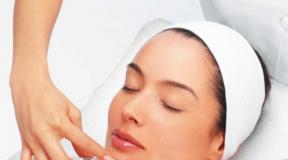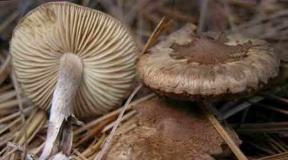Pharmacognosy gf 11 black henbane leaves. Other names: sleepy dope, belladonna, wild berry, wild cherry, rubuha. Use in homeopathy
Biennial herbaceous soft-pubescent, sticky plant, with an unpleasant odor. The plant has an antispasmodic effect.
The plant is poisonous!Ask the experts
flower formula
Black henbane flower formula: Ch5L5T5P2.In medicine
Atropine, obtained from henbane leaves, is most widely used, especially in eye practice. It is also used in the treatment of internal diseases: with peptic ulcer of the stomach and duodenum, bronchial asthma, spastic conditions of the intestines and biliary tract. From the leaves of henbane, “bleached oil” (oleum Hyoscyami) is obtained, used for rubbing with rheumatic and neuralgic pains. Black henbane leaves are part of the anti-asthma collection.
Henbane herb preparations are also widely used in obstetrics and gynecology, they are prescribed for dysmenorrhea, to reduce painful spasms of the muscles of the cervix, rectum, urethra and vagina.
Herbal preparations of black henbane are of limited use. The plant is poisonous and preparations from it are used only as directed and under the supervision of a physician. Henbane herb preparations are contraindicated for pregnant women.
Classification
Black henbane (lat. Hyoscyamus niger L.) belongs to the genus henbane (lat. Hyoscyamus) from the nightshade family (lat. Solanaceae). About 20 species are widely distributed in Eurasia, Africa, North America, Australia and the Canary Islands. Approximately 10 species are found on the territory of the CIS.
Botanical description
The plant is very poisonous! A biennial herbaceous plant, entirely covered with soft sticky pubescence. The root is vertical, weakly branched up to 2-3 cm thick, soft, with a thickened root neck. Leaves of rather wide morphology: dark green above, lighter below, lower ones in a basal rosette, petiolate, oblong-ovate, notched-pinnately incised, usually die off by the time of flowering; stem - alternate, sessile, semi-amplex, ovate-lanceolate, notched-lobed 3-25 cm long, 3-10 cm wide. The stem is branched, reaches 20-60 cm in height or more, cylindrical, densely covered with glandular trichomes (hairs). The flowers are large (2.5-4 cm in diameter), slightly zygomorphic, sessile, located in the axils of the upper leaves. Henbane flower formula: Ch5L5T5P2. The calyx is joint-leaved, deeply divided, remaining with the fetus. Corolla sympetalous, broadly funnel-shaped with a dirty yellow tint, with a network of dark purple veins and a dark purple throat. The fruit is a capsule enclosed in a hardened calyx and opening with a lid. Seeds are small (1.5 mm long), brownish-gray, rounded or slightly reniform, flattened, with a mesh-cellular surface. Blossoms in June-July, seeds ripen in August-September.
Spreading
It grows almost everywhere, but prefers warmer areas. Widely distributed in the Caucasus, throughout the European part of Russia (except the Far North), less often in Siberia and as an adventive plant in the Far East. Favorite places of growth - wastelands, vegetable gardens, orchards, outskirts of fields, often grows as a weed among field crops. Introduced into culture, in particular in the Krasnodar Territory.
Distribution regions on the map of Russia.
Procurement of raw materials
In medical practice, the leaves and leafy stems (grass) of black henbane are used as raw materials, collected in the first year of life, usually in autumn, when normally developed basal leaves are formed, from biennial plants - during the flowering period, and during the period of fruit set - all grass. They are dried in places with good ventilation, spread out in a layer of 1-2 cm, periodically turning over, or in dryers at a temperature not exceeding 60 0 C. Before drying, the grass is usually chopped on a straw cutter.
Henbane is a highly poisonous plant that causes severe poisoning, sometimes fatal. Children are more often poisoned, especially in the south. Therefore, one must be careful when collecting and drying as a medicinal raw material. After work, wash your hands thoroughly.
Chemical composition
All organs of black henbane contain alkaloids, mainly hyoscyamine, atropine, scopolamine: in roots (up to 0.18%), leaves (up to 0.10%), stems (about 0.02%), seeds (up to 0.10% ). The maximum amount of alkaloids in the leaves was found at the beginning of flowering. In the black henbane grass, substances of a glycosidic nature were also found: hyoscipicrin, hyoscerin, hyosciresin. The seeds contain up to 34% fatty oil, usually light yellow in color. The composition of the fatty oil includes: oleic acid - up to 22.4%, linoleic acid - up to 71.3% and unsaturated acids - up to 6.3%.
Pharmacological properties
Henbane herb preparations are used as an antispasmodic and analgesic, as well as a sedative in psychiatric practice and surgery in preparation for anesthesia.
The action of henbane preparations (dry and thick extracts) as antispasmodic and analgesic agents is due to the alkaloids contained in it - hyoscyamine, atropine, scopolamine, which have anticholinergic properties and thus provide a therapeutic effect. Atropine of henbane is used in ophthalmic practice as a mydriatic agent. Atropine has a pronounced effect on the secretion of the salivary, digestive and sweat glands, as well as on the rhythm of heart contractions, smooth muscles of the intestine, and bronchial muscles. In addition, atropine causes pupil dilation. An important healing property of henbane is the relaxation of the muscles of the bronchi and the decrease in the secretion of the bronchial glands, as well as the anesthetic effect in a mixture with chloroform in rheumatic and neurological diseases.
Application in traditional medicine
The special healing properties of henbane have been known to people since the dawn of history. But since henbane is a very poisonous plant, it is practically not used in folk medicine in its pure form. It is more often used externally in the form of an alcohol tincture with bleached oil for rubbing with gouty, rheumatic and neuralgic pains, as a lotion at the initial stages of the formation of boils and carbuncles, for rubbing in with colds, coughs, pleurisy, etc. Henbane oil is used separately for rubbing with various muscular pains and bruises. With great care, decoctions of henbane herbs are used to treat stomach diseases, to prevent asthma, hepatic and intestinal colic, diarrhea, bladder spasms and toothache.
History reference
As a medicinal plant, henbane has been used since ancient times and the Middle Ages. Its healing properties were widely used by the ancient Romans and Greeks. In Europe, henbane has been used since the 6th century as a pain reliever.
Literature
1. Blinova K. F. et al. Botanical-pharmacognostic dictionary: Ref. allowance / Ed.
K. F. Blinova, G. P. Yakovlev. - M .: Higher. school, 1990. - S. 187. - ISBN 5-06-000085-0.
2. State Pharmacopoeia of the USSR. Eleventh edition. Issue 1 (1987), issue 2 (1990).
3. State Register of Medicines. Moscow 2004.
4. Ilyina T.A. Medicinal Plants of Russia (Illustrated Encyclopedia). - M., "EKSMO" 2006.
5. Zamyatina N.G. Medicinal plants. Encyclopedia of the nature of Russia. M. 1998.
6. Medicinal plants: A reference guide. / N.I. Grinkevich, I.A. Balandina, V.A. Ermakova and others; Ed. N.I. Grinkevich - M.: Higher School, 1991. - 398 p.
7. Medicinal plants of the State Pharmacopoeia. Pharmacognosy. (Edited by I.A. Samylina, V.A. Severtsev). - M., "AMNI", 1999.
8. Medicinal plant materials. Pharmacognosy: Proc. allowance / Ed. G.P. Yakovlev and K.F. Pancake. - St. Petersburg: Spec. Lit, 2004. - 765 p.
9. Lesiovskaya E.E., Pastushenkov L.V. "Pharmacotherapy with the basics of herbal medicine." Tutorial. - M.: GEOTAR-MED, 2003.
10. Mannfried Palov. "Encyclopedia of Medicinal Plants". Ed. cand. biol. Sciences I.A. Gubanov. Moscow, Mir, 1998.
11. Mashkovsky M.D. "Medications". In 2 volumes - M., New Wave Publishing House LLC, 2000.
12. Nosov A.M. Medicinal plants in official and traditional medicine. M.: Eksmo Publishing House, 2005. - 800 p.
13. Plants for us. Reference manual / Ed. G.P. Yakovleva, K.F. Pancake. - Publishing house "Educational book", 1996. - 654 p.
14. Plant resources of Russia: Wild flowering plants, their composition and biological activity. Edited by A.L. Budantseva. T.5. M.: Association of scientific publications KMK, 2013. - 312 p.
15. Sokolov S. Ya. Medicinal plants. - Alma-Ata: Medicine, 1991. - S. 118. - ISBN 5-615-00780-X.
16. Sokolov S.Ya., Zamotaev I.P. Handbook of medicinal plants (phytotherapy). - M.: VITA, 1993.
17. Turova A.D. "Medicinal plants of the USSR and their application". Moscow. "The medicine". 1974.
18. "Phytotherapy with the basics of clinical pharmacology", ed. V.G. Kukes. - M.: Medicine, 1999.
19. Chikov P.S. "Medicinal plants" M.: Medicine, 2002.
Botanical description. Henbane black- Hyoscyamus niger L. - a biennial herbaceous plant of the Solanaceae family.
Taproot with a thickened root collar. The stem is erect, up to 120 cm high. The leaves are alternate, dark green above, lighter below; basal - petiolate, stem - sessile. The flowers are dirty yellow with purple veins, sessile, collected at the ends of the stem and branches. The fruit is a multi-seeded capsule. Seeds are brownish-gray, flattened, rounded, about 1.2 mm in diameter. The mass of 1000 seeds is 0.5-0.9 g. It blooms in June - July, the seeds ripen in August - September. The plant is sticky, pubescent, poisonous, with an unpleasant odor.
Spreading. Henbane grows widely throughout the European continent, except for the Far North. Less common in Siberia, Central Asia and the Far East. Grows in vacant lots, near dwellings, sometimes found as a weed on chernozem soils. In the USSR, they are cultivated in the Voronezh and Novosibirsk regions.
Application . Since ancient times, henbane has been used for treatment by different peoples. Currently, it is included in the pharmacopoeias of most countries. Leaves are the raw material. The therapeutic effect is determined by the content of alkaloids in them (atropine, hyoscyamine, scopolamine): in leaves 0.1%, stems 0.02%, roots 0.16%. In small doses, henbane alkaloids have a calming effect, and in large doses they strongly excite, cause hallucinations, and fatal poisoning is possible. Preparations from henbane (dry and thick extract, oil, leaves) are part of asthmatol and asthmatin; alkaloids are components of some complex preparations.
Biological features. In the first year, henbane forms a rosette of basal leaves, and in the second year it blooms and bears fruit. Seed reproduction. Seeds germinate at a temperature of 3-4°C. Germination is maintained for 4-5 years. The culture is light-loving. An increased need for moisture is noted in the first growing season. The maximum amount of alkaloids in the leaves accumulates during the flowering period. The winter hardiness of the plant is significantly reduced with increased humidity in the autumn-winter period.
Good yields of henbane leaf are obtained on fertile, well-drained soils with a slightly acidic or neutral reaction.
Predecessors and tillage. The best predecessors are black fallows or winter grains coming from well-cultivated fallows. Soil preparation is carried out depending on the predecessor. After winter cereals - obligatory peeling and after 10-12 days autumn plowing by 25-27 cm. During winter sowing, the main plowing is carried out no later than 25-30 days before sowing, so that the soil has time to settle. Before sowing, the plot is cultivated several times, leveled and rolled before sowing. In the spring period, pre-sowing preparation of sowing consists in early spring harrowing in two tracks, on compacted soils - cultivation to a depth of 5-6 cm with simultaneous harrowing, leveling and rolling.
Fertilizers. The use of fertilizers can significantly increase the yield and quality of marketable products. In this case, it is necessary to take into account the specific conditions of the economy: the type of soil, its mechanical composition, predecessors, the filling of the soil for the previous crop. Soils with high acidity are preliminarily limed. Lime is best applied under the predecessor. On soils of medium fertility, 30-40 tons per 1 ha of rotted manure are given as the main fertilizer together with 4 quintals of superphosphate. When applying only mineral fertilizers, their dose is N 100 120 P 100 120 K 120 120. Together with seeds, 30 kg are sown per 1 ha of granular superphosphate. On the plantations of the first year of life, nitrogen fertilization is carried out one and a half months before harvesting the "leaf" at the rate of 30-40 kg per 1 ha. Transient plantations are fed early in spring with mineral fertilizers at a dose of N 30 P 15 K 30 .
Sowing. The choice of sowing time depends on the specific conditions of the economy. Podzimny sowing should not be carried out in areas with floating soils, with steep slopes where erosion by melt water is possible, or with depressions where water stagnates for a long time. Before winter, with the onset of a steady cooling, dry seeds are sown, pickled with granosan (2 g of the drug per 1 kg of seeds). Seeds are sown without embedding at the bottom of the grooves with a depth of 1-2 with a seeder equipped for surface sowing. An important event in the areas of winter sowing is snow retention.
In the spring period, henbane is sown in the first 2-3 days of field work with seeds stratified for two months. The sowing rate of seeds of the first class is 8 kg per 1 ha, sowing depth is 1.5-2 cm, row spacing is 60 cm. 50-100 g of seeds of lighthouse plants (lettuce, flax, mustard), which sprout before the main crops and allow for inter-row processing before the emergence of its seedlings.
Care . On plantations of henbane of the first year of life during the growing season, 3-4 inter-row loosening, 1-2 manual weeding and top dressing are carried out. Caring for transitional plantations begins with early spring harrowing across crops, the number of manual weeding is reduced to one. When pests appear on the site, especially leaf-eating and omnivorous, pyrethrum is used at a dose of 20 kg per 1 ha. Against diseases (powdery mildew), dusting of plants with ground sulfur at the rate of 30 kg per 1 ha is effective.
Cleaning . Depending on the growing conditions, the raw material is harvested 1-2 times, when most of the rosette leaves reach full development and further growth of leaf blades stops. For harvesting use converted mowers-loaders. New leaves grow quickly. It is impossible to be late with harvesting, as this leads to a strong susceptibility of leaves to diseases and they lose their qualities. Plantations of the first year of life are marketable, only seed plots are left for the second year.
The collected mass is dried on fire or steam dryers at a temperature of 50-60 C. The dried leaves are cleaned on sieves from dust, sorted and packed in bales of 50 kg. Productivity of an air-dry leaf is 8-12 centners from 4 hectares. Finished products must meet the requirements of the GF-X, Art. 279. Shelf life 2 years. Henbane leaves are stored in separate rooms for poisonous plants.
Seed production. Plots are left for seeds after collecting the leaves of the first year of vegetation. The area of the seed plot is S-10% of the commercial plantation. The seed plants are laid with seeds obtained from the VILR systems, observing the spatial isolation from commercial crops of 50-100 m. Harvesting is started as soon as the first boxes reach the ripening phase. Plants are cut into windrows with harvesters, dried for 3-5 days and threshed with grain combines. Seeds are cleaned on seed cleaning machines with a set of sieves for small seed crops. The yield of seeds is 3 centners per 1 ha.
In all work, both with raw materials and with henbane seeds, it is necessary to follow the rules for handling poisonous plants.
If you find an error, please highlight a piece of text and click Ctrl+Enter.
quarantine organism
Family: Solanaceae (Solanaceae)
Genus: Henbane (Hyoscyamus)
biological classification
Definition
Henbane black-weed plant, has an unpleasant odor. It can develop as a biennial or annual winter crop. Height up to 115 cm. The stem is thick, sticky, pubescent. The leaves are alternate pinnately lobed, ovate, the lower ones are petiolate, the upper ones are sessile.
The flowers are solitary, large, pale yellow with a mesh of purple or purple veins. The fruits are pale yellow pitcher-like, two-celled capsules containing small gray-yellow or gray-brown seeds. Flowering from May to July, fruiting from July to August. A highly poisonous plant. Euro-Asian species, known in Australia and North America. (Trukhachev V.I., 2006) (Fisyunov A.V., 1984) (Shishkin B.K., 1955)
Morphology
Shoots of Henbane black are distinguished by a stupefying smell and unpleasant taste. Like the adult plant, they are poisonous. The subcotyl area is pink-violet, naked, underdeveloped. The supracotyloid area is undeveloped. Cotyledons narrow, ovoid (lanceolate). The top is sharp. Cotyledon length 8 - 10 mm, width 2.5 - 4.0 mm. The bases end in small petioles up to 3–5 mm long.
The first and second sheets are alternate. Length 12.0 - 16.0 mm. Width 6.0 - 8.0 mm. First leaf slightly obovate, apex obtuse. The second sheet differs from the first in a slightly wavy edge. The third and all the nearest ones differ from the first ones in larger sizes, they are located next. All leaves taper to varying degrees of woolly, often bluish petioles. Leaf blades and cotyledons on the reverse side often with a blue tint. (Fisyunov A.V., 1984) (Vasilchenko I.T., 1965)
An adult plant has an unpleasant odor and is covered with soft, sticky protruding fluff. Annual - a rosette of elliptical soft leaves, along the edges notched-incised on long petioles. In the second year of development, a thick (diameter at the base 1.5–2 cm), green, branched stem grows, reaching a height of 115 cm. In weakened specimens, it is simple. The stem is covered with longitudinally lanceolate semi-amplex leaves. (Shishkin B.K., 1955) (Gubanov I.A., 2004)
The flowers are clustered on the tops of the stems in leafy whorls. After flowering, the latter are greatly elongated. The calyx is tubular, broadly campanulate above the middle, with five triangular sharp teeth. The corolla is funnel-shaped, dirty yellow or whitish in color with a network of purple or purple venation. Stamens five, two short and three long. The latter slightly exceed the pharynx with hairy threads in the lower part, attached in the very middle of the tube. Ovary without pubescence. (Shishkin B.K., 1955) (Gubanov I.A., 2004)
The fruit is a multi-seeded jug-shaped box with two nests. Opens with a lid. In the box, gray-yellow or gray-brown, slightly reniform, rounded, flat seeds with a slightly depressed middle part ripen. The surface of the seeds is cellular. The sides of the cells are raised, the fields are matte, slightly shiny, shiny. Seed size: 1.25 - 1.75x1 - 1.25 x 0.5 - 0.75 mm. Weight of 1000 pieces - 0.5 - 0.6 g. (Dobrokhotov V.N., 1961) (Fisyunov A.V., 1984)
The underground part is not branched, without a pronounced root collar, thin, woody, taproot. (Shishkin B.K., 1955) (Trukhachev V.I., 2006)
Biology and development
Henbane black usually develops as a biennial plant. Shoots appear from March to May. The first - at a temperature of +4°C - +6°C. The optimum germination temperature is +18°C - +20°C, the maximum temperature is + 30°C - +32°C. In the first year, a rosette with basal leaves and a root is formed. Throws out a stem, blossoms and bears fruit black henbane in the second year of development. The flowering phase runs from May to June, fruiting - from July to August. Fertility - up to 446,500 seeds per plant.
Freshly ripened seeds germinate only by 19%, unripe - by 12%. Germination is possible from a depth of no more than 1.5 cm. The viability of seeds can last 5 years. Mature seeds leave the boxes only under mechanical action.
The species can develop as a winter annual plant. In this case, the flowering phase takes place after the overwintering of seedlings from June to July, fruiting - from July to August. Sometimes the plant reaches generative age already in the first year of development. In this case, flowering and fruiting are observed for two years. (Shlyakova E.V., 1982) (Fisyunov A.V., 1984) (Keller B.A., 1935)
Spreading
Habitat in nature
Henbane black- a ruderal plant, found near residential buildings, along roads, on fallow lands, along river valleys, on pebbles, shallows, pastures. (Shishkin B.K., 1955) (Keller B.A., 1935)
Geographic distribution
Henbane black- distributed almost throughout Eurasia. The species is well known in North Africa, North America and Australia. In Central Russia, it grows in all areas. (Shishkin B.K., 1955) (Gubanov I.A., 2004)
Maliciousness
Henbane black- a special weed, a companion of the poppy. In the forest-steppe zone, it litters crops of winter cereals, in the Non-Chernozem zone in the southern part of broad-leaved forests it is singly found in crops of various crops, throughout the northern taiga zone - singly in crops of tilled crops. The species can populate fallow fields, kitchen gardens, orchards, the outskirts of vineyards. (Shalamova E.L., 2009) (Keller B.A., 1935)
Plants in fields overgrown with weeds reduce the quantitative and qualitative indicators of yield. This is due to the formation of a number of negative factors:
- shading of plants and soil;
- decrease in soil temperature;
- violation of the air and water regime;
- the development of pathogenic organisms;
- the mechanization of tillage and harvesting is hampered. (Masterov A.S., 2014)
Slave Unit Pesticides Against
Chemical
Treatment with herbicides of the group of aryloxyalkanocarboxylic acids, carbamates, sulfonylureas, glyphosates and other substances. (Masterov A.S., 2014) (State catalogue, 2017)
Compilers: Grigorovskaya P.I., Zharyokhina T.V.
Henbane black in magic and medicineHenbane black is a biennial, sometimes annual, winter plant belonging to the nightshade family and having a fleshy, thick tap root. An unpleasant and heavy smell emanates from the plant, and it is covered with sticky, glandular and soft hairs. The stem of henbane is branched and straight, and the maximum height of the plant can reach 115 cm.
The leaves of black henbane have a grayish-greenish tint. Her flowers are quite large, their length reaches 2-3 cm, they have thick leafy curls. The plant flowers mainly from June to October. As with many other plants, the fruits ripen around August-September. Henbane reproduces exclusively by seed, with one plant capable of producing on average up to 10 thousand seeds.
Black henbane is widespread in the Caucasus, in the European part of the CIS (middle lane), in the Crimea and in Central Asia. The plant is a weed and grows near fences, in yards, near the walls of various buildings, in vegetable gardens and fields.
Collection and drying of raw materials
Black henbane leaves are used exclusively for medicinal purposes, but special extracts are made from grass.
Rosette lower leaves from plants are collected only in autumn (this applies to henbane of the first year of life), and during flowering stem leaves are collected from henbane of the second year of life. Raw henbane can be harvested only in dry and sunny weather, since drying takes place on the same day in attics with good ventilation, or simply under a canopy, where the plant is spread out in a thin layer. Periodically, the raw materials need to be turned over. Under good weather conditions, black henbane can dry out after 5-7 days. Properly prepared raw materials have a shelf life of about 2 years, their smell is peculiar, weak, and can intensify when wet.
The use of black henbane
Preparations from henbane black can have a peripheral effect, which is associated with the presence of tropane alkaloids in henbane. With the help of these funds, spasms of the muscles of the intestines, urinary and biliary tract can be reduced or stopped. To a lesser extent, these drugs act on the muscles of the bronchi, in addition, they inhibit the separation of gastric juice, saliva, lacrimal fluid and mucus.
The effect of the drug on the central nervous system is ambiguous, it depends on the content of scopolamine in the raw material. If the content of the alkaloid prevails, then the plant can have a sedative effect, as well as inhibit the excitation processes occurring in the motor zone of the cortex.
In various types of medicine, black henbane can be used in different ways.. For example, in Mongolia it is used for erysipelas, smallpox, diphtheria, and anthrax. The essence of the fresh plant of this species is also used for various manic-depressive psychoses, nervous tics, stuttering in children, nymphomania and neuroses.
In folk medicine, black henbane is a powerful anticonvulsant, sedative, analgesic used for nymphomania, parkinsonism, neuralgia, headaches, bronchial asthma, chronic bronchitis, nervous tics, pneumonia, bladder spasms, hysteria, diuretic phenomena, cholelithiasis, algodismenorrhea, rheumatism.
A decoction of black henbane roots is widely used for hematuria and rabies, but the aerial part of the plant is popular in Tibetan medicine in the treatment of pediculosis and helminthiasis. Traditional medicine decoction of henbane treats sciatica and rheumatism. With furunculosis, it is recommended to use a decoction in milk both externally and internally.
Black henbane leaf extract is a strong analgesic and antispastic agent for the treatment of diseases of the gastrointestinal tract. It is this extract that is part of such drugs as Astmatol and Astmatin, which are used in the treatment of bronchial asthma.
"Bleached oil" is a unique vegetable oil extract, which includes dried and coarsely ground black henbane leaves, alcohol (95%), ammonia solution (70%), sunflower oil. This remedy is an oily and transparent liquid, having a brownish-green color and a peculiar smell. It can be used for external rubbing with neuralgia and rheumatism.
Externally and internally, henbane powder is used in Mongolian medicine for the treatment of venereal and skin diseases, eczema, scabies, syphilis, ringworm. Traditional medicine uses this medicine to eliminate nervous excitement, headache, hysteria, as well as to treat chronic bronchitis, stomach cramps, bronchial asthma and many other diseases. 
Henbane seeds are officially recognized in France, Portugal and Denmark. Indo-Tibetan medicine uses the seeds to treat various infectious diseases, while Tibetan medicine endows the seeds with an antibacterial effect. In folk medicine, seeds are used in the treatment of respiratory infections, bronchopneumonia, colitis, gastritis, cystourethritis, whooping cough, nervous diseases, convulsions, and enteritis. Seed-based ointment is indispensable in the treatment of bone tuberculosis, and a decoction for colds in the form of baths.
Contraindications to the use of black henbane
Since ancient times, black henbane has been known as one of the most poisonous plants. therefore, preparations made on the basis of a plant should be used exclusively under the supervision of a physician, as well as for his intended use.
Poisoning is possible if the seeds are eaten, which, by the way, taste good, and, of course, in cases of an overdose of drugs based on black henbane. Poisoning can occur in the form of acute psychosis, sometimes even with hallucinations, it is characterized by speech and motor excitement, difficulty urinating and swallowing, dry mouth.
Ethnoscience:
Henbane as a medicinal plant has been known since ancient times.
In folk medicine, it is used as a sedative, anticonvulsant, analgesic in parkinsonism, neuralgia, nymphomania, convulsions, headaches, bronchial asthma, chronic bronchitis, pneumonia, nervous tics, hysteria, bladder spasms, dysuretic phenomena, algomenorrhea, in menopause, with bile - stone disease, rheumatism. Outwardly (crushed) - analgesic for local inflammation, infiltrates, abscesses, tumors; smoke - with toothache. Decoction (in the form of baths) - for colds. Ointment (on sour cream) - with bone tuberculosis.
In folk medicine, henbane was often used as a pain reliever, especially for toothache. In many rural areas, seeds and seed pods were used for this purpose for smoking, with sometimes very sad consequences. Another, perhaps safer, way is to throw henbane seeds on the coals and catch the rising smoke in your mouth. In "Herbal" Gerard is recommended to hold in his mouth (without swallowing, of course) a hot decoction of henbane with vinegar. Gerard adds that charlatan dentists of the day resorted to the above-described method with charcoal, after which they showed the patient pieces of lute string and passed them off as worms that caused pain and were extracted from the tooth in this way.
A hot foot bath of henbane decoction before bedtime was used as a remedy for insomnia.
In Mongolian medicine, powder (inside and out) - for skin and venereal diseases, scabies, eczema, ringworm, syphilis; as an anthelmintic.
In henbane, grass collected in the flowering phase, seeds and roots are used. Her preparations are mostly used externally. Alcohol tincture is combined with vegetable oil and rubbed against rheumatism, gout. Lotions from the infusion of leaves are applied to boils, carbuncles at the first sign of their appearance. An ointment is boiled from the seeds on a fatty basis, applying it externally for bone tuberculosis. Poultices of henbane are useful for stomach pains. The extract from the peel taken from the stem heals dental diseases.
Many have heard about the strong toxicity of henbane. Avicenna wrote: “Herbane is a poison that causes insanity, deprives memory and causes suffocation and demonic possession.” The notoriety of this plant was used by Shakespeare in the tragedy "Hamlet", where the king is killed with an infusion of henbane. However, henbane poisoning rarely leads to death, because no one will consume it in monstrous quantities. It should be noted that the seeds are more poisonous than the leaves.
GOUT, RHEUMATISM, NEURALGIC PAIN. Pour 3 teaspoons of crushed dry henbane seeds with 10 teaspoons of sunflower oil, leave for 10 days. Bleached oil is used for rubbing sore spots on limited areas of the body.
STRONG INTERNAL PAIN, TOOTH PAIN. A quarter of a half-liter glass jar of dried leaves, pour 0.5 liters of vodka to the top and insist in a dark place, strain. Take 2 drops per tablespoon of water (sometimes 5 drops) for severe internal pain. For toothache, wet a cotton pad and put it on the aching tooth for a few minutes. Do it several times with breaks until the pain subsides.
Henbane preparations should be prescribed only by an experienced herbalist. Henbane increases intraocular pressure, therefore it is contraindicated in glaucoma. It is forbidden for oral administration in case of heart diseases accompanied by tachycardia, arrhythmia, extrasystole. Henbane is contraindicated in pregnancy.
Magic:
Henbane exhibits a variety of magical properties. But there are certain types of magic where this plant has gained particular popularity.
A lot of information can be found talking about the use of henbane in love magic. So, if a man stripped to the naked picks up henbane in the morning, standing on one leg, then this will help him win the love of a woman. He will become more desirable to her.
It is also believed that a person who wears henbane grass on his body becomes cheerful and pleasant. Belena in this case attracts universal love for a person.
Sometimes henbane is thrown into the water to make it rain. This also contributed to the success in fishing. Also, to call rain, henbane was burned outside the walls of the house. However, the smoke of henbane is very harmful, so many sources advise replacing it in this case with a fern.
There is another interesting way to use the magical properties of henbane that hunters can use. This method was known in Russia. If henbane, dried and turned into powder, is mixed with the blood of a young hare and this mixture, preserved in the skin of the same hare, is placed somewhere in an open place near the forest, then hares from all surroundings will gather at this place and will crowd there until the hare with henbane will not be removed.
There are sources that mention that a mixture of henbane, hemlock, aloe, saffron, opium and mandrake are used by magicians in the ritual of resurrection. In medieval Italian books, Circe's recipe is preserved, which she used to turn people into pigs. So one of the necessary components was just henbane.
It is also believed that henbane promotes clairvoyance, and if it is burned on fire, then its vapors help those who are skilled in this art to summon spirits.
Henbane is also used in magical potions against mysterious ulcers caused by witchcraft.
Myths and legends:
Eating any part of henbane, especially the root, is indeed very dangerous, it was believed that this could lead to infertility, insanity or a deep trance, from which it is possible to get out only with great difficulty. It is from this last belief that probably the modern Welsh belief stems - that if a child falls asleep near a growing henbane, he will not wake up.
If the English belief interprets henbane as a powerful sleeping pill, then in Russia, on the contrary, henbane was considered a means that excites the nervous system and can lead to temporary insanity. From the court and the saying: "He overate henbane."
In ancient Russian mythology, Lyub is the guardian spirit of the marriage bed. He sometimes appeared to people in the form of a big-eared golden-haired cat. Its antipode - Dislike - is a black, vicious cat with a henbane branch in its predatory mouth.
Even in an ancient herbalist, it was said that a person who inhales the smoke of henbane seeds becomes very dizzy and loses his mind. According to ancient Russian mythology, henbane is a plant of Yarila, the god of the violent, spring, male fertilizing force of nature.
There used to be such a military trick. Leaving their battle camp, the commanders left the enemy a supply of wine, having previously mixed henbane into it. The enemy occupied an abandoned camp, pounced on wine and, intoxicated, fell asleep. And those who retreated returned and cut out the sleeping enemy.
In the Middle Ages, henbane seeds were widely used in Germany to enhance the intoxicating effect of drinks. The names of many German cities come from the word "belsen" - henbane, hence the name "Pilsen beer". But so numerous were cases of poisoning with henbane beer that the government forbade adding henbane seeds to beer.
Avicenna wrote more than 1000 years ago: “Herbane is a poison that causes insanity, deprives memory and causes suffocation and demonic possession.” The property of henbane to cause hallucinations was used in the Middle Ages as part of the “witch ointment”, where it was included along with belladonna fruit extract. The ancient Balts had a special group of warrior-servants of the wolf god who went into battle after drinking the drink of henbane. During the battle, such warriors considered themselves wolves. According to legend, wolf warriors were so ferocious that they did not need weapons and killed enemies with their shields.
Recipes:
In medicine, from dry leaves of henbane and hemlock speckled in equal parts, an alcohol tincture is prepared (2 parts of the mixture for 5 parts of 90 degrees alcohol). This tincture, 2 drops per 1 tablespoon of water, is taken orally no more than 3 times a day for severe internal pain and convulsions.
Henbane is used against aphids, suckers, spider mites, herbivorous bugs, hawthorn and goldentail caterpillars, as well as against cabbage white caterpillars and moths on cabbage plantings. For infusion, 1 kg of finely chopped dry plants is poured into 10 liters of water and infused for 12 hours. If the raw material is ground into a dry powder or an infusion is prepared from rosette leaves and roots, then the amount of raw material is reduced by 2 times, that is, 500 g per 10 liters of water are taken. After straining, 40 g of soap or other detergent is added to the infusion before spraying for every 10 liters. Dry plants, ground into powder, are recommended for dusting. To prepare the decoction, dry raw materials and water are taken in the same proportion as for the infusion, boiled for 30 minutes, cooled and filtered. When using the tops of plants - 3 kg of fresh henbane (or 2.5 kg of dried henbane) are boiled in a small amount of water in an enamel bowl for 2-3 hours, the broth is cooled, filtered and topped up with water up to 10 liters.
Henbane black(black fade) - Hyosciamus niger L.
Synonyms: night blindness (ukr. blekota black, cradle, cradles, nimitsya black, nimitsya, cradle, tooth).
Description. Black henbane is a biennial herbaceous plant from the nightshade family (Solanaceae) 30–100 cm high. The root is branched, taproot. Stem erect, hollow inside, branched or simple, densely covered with soft sticky hairs.
Medicinal raw materials: leaves.
biological features. In the first year of life, it gives only a rosette of basal leaves, and in the second year it already bears fruit. It has a very extended flowering period - from June to September. In the first period of growth, it requires increased soil moisture, but an excess of moisture in a later period adversely affects the yield.
Habitat. In the wild, black henbane is found near rivers, on fallow lands. As a weed, it grows on roadsides, wastelands, ditches and other waste lands.
Spreading. Black henbane has a very large distribution area. It is found almost throughout the entire USSR, with the exception of the taiga (northern) part of Siberia. As a weed, it grows almost everywhere.
In recent years, black henbane has been introduced into cultivation and is already cultivated in specialized state farms in the Novosibirsk and Voronezh regions.
Under natural conditions, raw materials for black henbane are harvested in Ukraine, the Bashkir Autonomous Soviet Socialist Republic, the Voronezh Region, the Krasnodar Territory and other regions of the Soviet Union.
Composition of active substances. The main active ingredients of black henbane are alkaloids (0.05–0.1%): hyoscyamine, atropine, scopolamine. They act like atropine: they have an antispasmodic effect on smooth muscles, increase intraocular pressure, dilate the pupils of the eyes, and cause palpitations. In addition, henbane contains protein substances, calcium oxalate, caxap, gum, fatty and essential oils, sugar, etc. Henbane alkaloids act differently on the central nervous system: hyoscyamine increases, and scopolamine lowers the excitability of the nervous system.
Application. Black henbane and preparations obtained from its leaves are used as a sedative, analgesic and anticonvulsant, similar to belladonna preparations. In homeopathy, it is used in the treatment of violent insanity.
It has been known as a remedy since ancient times. Currently, henbane is included in the pharmacology of many countries. It is prescribed in very small doses: in powders, drops, in the form of a dry extract for the treatment of digestive and respiratory organs as a sedative. In large doses, henbane causes strong excitement and poisoning. A mixture of dry leaves of black henbane, sage and dope is used as a smoke for the treatment of bronchial asthma. Aeron tablets containing hyoscyamine are used for nausea and dizziness. Bleached oil is used as an external remedy in a mixture with chloroform and other substances for rubbing in muscle and neuralgic pains.
In folk medicine, black henbane is used very, very rarely.
Agrotechnics of cultivation. Site selection. The best yields of henbane black gives when grown on fertile, well-drained soils with a slightly acidic reaction. As the best predecessors, VILR recommends black fallow, winter crops running on fertilized fallow or on a layer of perennial grasses, as well as tilled crops.
tillage It is produced basically in the same way as for other tilled plants.
Fertilization. VILR experiments established that positive results on the accumulation of alkaloids in black henbane are provided by nitrogen and phosphorus fertilizers. As the main fertilizer introduced from autumn, 30–40 t/ha of rotted manure with 60 kg/ha of superphosphate is recommended. During sowing, granulated superphosphate is introduced into the rows at the rate of 6–8 kg/ha of the active substance. In the summer, one and a half to two months before harvesting the leaves, they are fertilized with ammonium nitrate at the rate of 30 kg / ha.
On plantations of the second year of culture, in early spring, 30 kg/ha of nitrogen and potash, 45 kg/ha of phosphorus fertilizers are applied.
reproduction produced by sowing seeds directly into the soil in early spring or before winter. The sowing method is ordinary with a row spacing of 60 cm. For spring sowing, the seeds are stratified within 40–45 days. The seeding rate is 8 kg/ha, the seeding depth is 1.5–2 cm. They are sown with vegetable or grain seeders.
Before winter, they are sown as late as possible, before the onset of frost, in order to avoid possible seed germination in the fall.
plantation care consists in two or three timely loosening of row-spacings with simultaneous weeding and fertilization in the form of top dressing. The same is done in early spring on the plantations of the second year of culture. At winter sowing dates, loosening is carried out at the first opportunity for field work. And with spring sowing, the first treatment is carried out as soon as seedlings are indicated on the mother plants. In the future, loosening and weeding is carried out if necessary.
Cleaning rosette leaves in the first year of life is produced twice during the summer in July - August. At this time, the leaves are most rich in alkaloids.
Stem leaves are harvested by machines in the second year of culture - at the beginning of flowering, and the tops of stems and branches in the form of grass to obtain an extract at the end of flowering, i.e. at the beginning of formation
fruits at the bottom of the inflorescences. The collected leaves and grass are crushed on a straw cutter before drying and immediately sent to the place of drying.
Drying it is produced in dryers at a temperature not exceeding 30–40 ° C. It can also be dried in attics under an iron roof, spreading the raw material in a thin layer on sieves, paper (cardboard), canvas, provided there is good ventilation. The end of drying is determined by the fragility of the petioles of the leaves when bent.
Package produced in bales of 50 kg.
Storage. Henbane leaves should be stored in a well-ventilated area.
quality requirements. Medicinal raw materials of black henbane should consist of intact whole, well-dried stem and basal leaves. In accordance with the State Pharmacopoeia X allowed: moisture-14; total ash - 20 (including ash insoluble in 10% hydrochloric acid - no more than 10); organic and mineral impurities - 1% each; leaves turned brown and blackened - 3; other parts of henbane - 5%. For whole raw materials of crushed parts passing through a sieve with a hole diameter of 3 mm - 8%; for cut raw materials, particles over 8 mm long, no more than 10, particles passing through a sieve with a hole diameter of 0.5 mm, no more than 8%.



